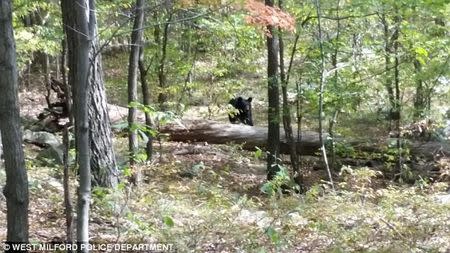New Jersey bear hunt fueled by emotion over mauling death
By Frank McGurty WEST MILFORD, N.J. (Reuters) - New Jersey's annual black bear hunt is stirring up even more emotion than usual this year after the mauling of a student by a 300-pound male bruin and controversy over how much humans may be responsible for the fatal encounter. For opponents of the six-day hunt that starts Monday, the September death of Darsh Patel could not have come at a worse time, since the state is considering expanding hunting as part of a new five-year bear management plan. Hunters say the mauling of the 22-year-old Rutgers University student was an extreme consequence of allowing black bears to encroach on populated areas by failing to cull their numbers. "Animal rights activists have been calling bears 'the dolphins of the forest' ... but things like this can happen," said New Jersey Outdoor Alliance Chairman Anthony Mauro. "I think that is why the attack may have been good, to help sober up people a little bit," he said. The attack on Patel while he was hiking in New Jersey's Apshawa Preserve, some 30 miles west of New York's bustling Times Square, marked the first fatal mauling ever recorded in the state. It came during a year when sightings and complaints about bears have jumped, despite their reduced numbers, in the northwest corner of New Jersey. The state determined that the mauling was a rare case of predatory behavior by a male black bear, which, unlike the more aggressive grizzly of the western U.S. states, tends to be shy and avoid conflict with humans. In North America, only 63 people have been reported killed in black bear attacks from 1900 to 2009, according to a study led by University of Calgary professor Stephen Herrero. Opponents say bears in New Jersey have gravitated to populated areas in part because hunters are allowed to use bait, conditioning the animals to seek out garbage, barbecue grills and even kitchen pantries. At the same time, there are no state requirements that New Jersey residents use bear-resistant garbage containers. "Hunting does not solve any problems; it creates new ones," said Susan Russell, wildlife policy director at the Animal Protection League. "Residents and public safety are far better served by removing attractants and learning how to behave in the presence of bears." FEWER BEARS State officials say the bear population in northwestern New Jersey has shrunk about 30 percent to 2,400 from 3,400 since the return of hunting there five years ago. Enthusiasts say a ban on the sport beforehand had allowed the bear population to balloon. Slashing the number of bears was the initial goal of the five-year plan, and the state could decide to expand the hunt beyond the northwest area after the 2014 season. All options are on the table, including opening new areas to hunters, lengthening the season and allowing hunting earlier in the fall, said New Jersey Department of Environmental Protection spokesman Lawrence Hajna. Throughout New Jersey, bear sightings were up 41 percent this year, and nuisance and damage complaints had increased 60 percent as of Nov. 20, according to the state. Hajna attributes the apparent spread of black bears, which have been spotted from the suburbs of New York City to Cape May in the far south, to males on the prowl for mates. But Rutgers University professor Edward Tavss, who wrote a study often cited by hunt opponents, says evidence shows no direct relationship between the number of complaints and the number of bears. The study suggests garbage control and aversive conditioning of bears in populated areas are just as effective as hunting in reducing serious incidents. Hajna says a shortage of natural food in bear country this year might explain the jump in sightings after two years of declines. But Russell is suspicious of how complaints are compiled, calling it part of "a numbers game" by hunting enthusiasts to build support for extending the hunt. Even so, Patel's mauling has heightened fears in New York City's suburbs, where it is no longer uncommon to see one of the animals. A typical sighting took place in October near an elementary school in Ridgewood, New Jersey, an upscale town with no bear habitat within miles. The stray evaded capture for hours while children were in lockdown inside the building. (Additional reporting by Terence McGinley; Editing by Jill Serjeant and Lisa Von Ahn)


